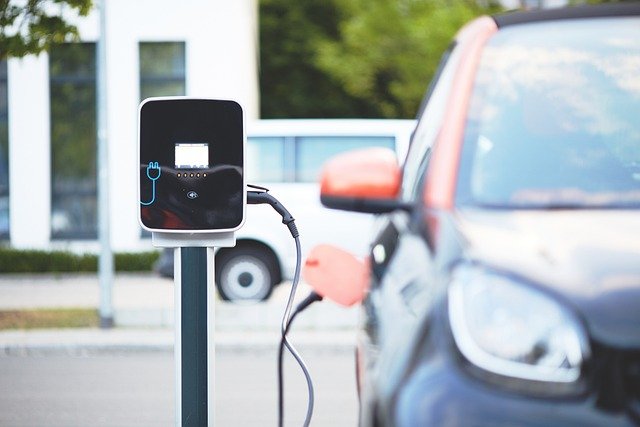Electric Cars: Benefits, Costs, and the Future of Driving
Electric vehicles (EVs) are transforming the automotive landscape, offering an alternative to traditional combustion engines that dominated transportation for over a century. As climate concerns grow and technology advances, electric cars have evolved from niche products to mainstream options available from virtually every major manufacturer. This shift represents one of the most significant transitions in personal transportation since the invention of the automobile itself.

The Rise of Electric Cars Worldwide
The global electric vehicle market has experienced remarkable growth in recent years. In 2010, there were only about 17,000 electric cars on roads worldwide. By 2022, that number had grown to over 16 million. Countries like Norway lead the transition, where EVs represented nearly 80% of new car sales in 2022. China remains the largest overall market, while the United States has seen accelerating adoption rates with over 800,000 new electric vehicles registered in 2022 alone.
This growth stems from multiple factors converging: improved battery technology, expanded charging infrastructure, government incentives, and increasing consumer awareness about environmental issues. Major automakers have committed billions to electrification strategies, with some planning to phase out internal combustion engine vehicles entirely within the next decade.
Environmental Benefits of Electric Cars
Electric vehicles offer significant environmental advantages compared to conventional vehicles. Most notably, EVs produce zero tailpipe emissions, eliminating direct pollution in urban areas where air quality concerns are paramount. When powered by renewable energy sources, their overall carbon footprint becomes substantially smaller than that of gasoline or diesel vehicles.
A lifecycle assessment shows that even when accounting for manufacturing impacts, electric vehicles typically produce fewer greenhouse gas emissions over their lifespan than conventional cars. The manufacturing process for EVs—particularly battery production—initially creates more emissions than manufacturing conventional vehicles. However, this “carbon debt” is typically offset after 1-2 years of driving through operational efficiency.
Additionally, electric motors are inherently more efficient than internal combustion engines, converting about 77% of electrical energy to power at the wheels, compared to only 12-30% energy conversion efficiency in conventional vehicles. This fundamental efficiency advantage means EVs require less total energy to operate.
Costs of Ownership and Maintenance
The economics of electric vehicle ownership involve important considerations across purchase price, operating expenses, and long-term value retention. While the initial purchase price of electric vehicles typically exceeds comparable conventional models, this gap continues to narrow as battery costs decline and production scales increase.
Several factors impact the total cost of EV ownership:
-
Purchase price: Generally higher than conventional vehicles, though government incentives can significantly reduce this difference
-
Electricity costs: Usually lower than equivalent gasoline expenses, with average savings of $800-1,200 annually
-
Maintenance requirements: Fewer moving parts mean reduced maintenance expenses, with typical savings of 30-40% compared to conventional vehicles
-
Insurance rates: Often slightly higher due to specialized repair requirements and higher initial values
-
Battery replacement: The most significant potential expense, though most manufacturers offer 8-10 year warranties
| Expense Category | Electric Vehicle | Conventional Vehicle |
|---|---|---|
| Initial Purchase (mid-size sedan) | $40,000-60,000 | $25,000-40,000 |
| Annual Fuel/Energy | $450-850 | $1,400-2,000 |
| Annual Maintenance | $300-550 | $600-1,200 |
| Battery Replacement (after 8-10 years) | $5,000-16,000 | Not applicable |
Prices, rates, or cost estimates mentioned in this article are based on the latest available information but may change over time. Independent research is advised before making financial decisions.
Over a 10-year vehicle lifespan, many owners find that total operating costs for electric vehicles reach parity or become lower than conventional vehicles, despite higher initial purchase prices. This equation continues to improve as battery costs decline and residual values for electric vehicles strengthen.
Technology and Features in Modern EVs
Modern electric vehicles incorporate advanced technologies that extend beyond just the powertrain. These innovations enhance both performance and convenience aspects of the driving experience.
Battery technology has evolved substantially, with energy densities improving approximately 5-7% annually. Current lithium-ion batteries typically provide 250-400 miles of range, with fast-charging capabilities that can restore 80% capacity in 20-40 minutes at appropriate stations. Solid-state batteries represent the next frontier, promising even greater energy density, faster charging, improved safety, and longer lifespans.
Electric vehicles also showcase innovative features including:
-
Regenerative braking systems that recover energy during deceleration
-
Advanced thermal management systems to optimize battery performance
-
Over-the-air software updates that improve vehicle functionality over time
-
Vehicle-to-grid capabilities that allow cars to interact with electric utilities
-
Enhanced driver assistance technologies leveraging electric architecture advantages
Many electric vehicles also feature purpose-built platforms optimized specifically for electric powertrains, providing advantages in interior space efficiency, weight distribution, and structural integrity compared to converted conventional designs.
The Future of Electric Mobility
The trajectory of electric vehicles points toward continued expansion across global markets. Industry forecasts suggest electric vehicles could represent 40-60% of new vehicle sales globally by 2030, though adoption rates will vary significantly by region based on infrastructure development, government policies, and consumer preferences.
Several developments will shape this evolution:
Charging infrastructure continues to expand rapidly, with networks becoming more reliable and offering faster charging speeds. Next-generation charging technologies may enable 350kW+ charging rates, potentially reducing charging times to under 10 minutes for substantial range increases.
Battery technology advancements remain crucial, with research focusing on increasing energy density while reducing dependence on scarce materials like cobalt. Solid-state batteries represent a promising development pathway, potentially offering 80-100% more energy density than current lithium-ion technologies.
Market expansion will likely bring electric options to additional vehicle segments, including more affordable compact cars and specialized vehicles like pickup trucks and commercial vans. This diversification will help address remaining adoption barriers across different consumer needs.
The relationship between electric vehicles and renewable energy will also strengthen, with smart charging systems optimizing vehicle charging around grid conditions and available renewable energy. This integration creates potential for electric vehicles to serve as distributed energy storage assets within broader clean energy systems.




